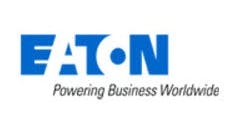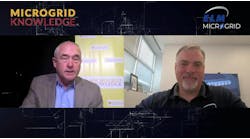More than ever, businesses and communities need to take greater control over energy infrastructure and sources. Energy costs are soaring. Power outages because of severe weather are increasing in frequency and impacting even more communities and businesses. And meeting our sustainability goals is a must to stave off the most severe impacts of climate change.
With the Inflation Reduction Act, communities and businesses have new tax incentives available to build a clean energy infrastructure that can also deliver resiliency and cost savings. In this new legislation, battery energy storage systems, microgrid controllers, interconnection equipment and related installation costs are included along with solar photovoltaic (PV) equipment, which was previously included in the production tax credit and investment tax credit.
In effect, these tax incentives help reduce overall clean energy infrastructure costs in an effort to promote renewable and microgrid technology. By greatly increasing the incentives for these projects, the law will help cut the time to realize your return on investment.
So, how do you take control of your energy infrastructure and sources? For years, we’ve deployed microgrid systems along with energy storage and solar PV systems to keep the power on. When your energy infrastructure acts like a utility grid, it’s a lot easier to get the energy you need more sustainably and affordably. Further, if and when your electricity consumption increases because of new electric vehicle charging infrastructure or building electrification, microgrids and energy storage provide that extra flexibility — enabling a relatively quick way to increase electrical capacity and postpone, or even avoid, costly utility grid upgrades.
Typically, the hardest part is getting started. Based on hard earned lessons, we at Eaton believe these are the key considerations for keeping the power on:
1. Determine how resilient you need to be
Resilience is about eliminating downtime. The first step is assessing the impact (and pain) from a power outage. This requires quantifying the cost of power disruptions and the likelihood of them happening in the first place at your site.
This means determining the cost of a power outage or interruption by measuring estimated community impact, revenue losses, related expenses and increased emissions. It’s also essential to benchmark the likelihood, duration and anticipated impact of power outages. This can be accomplished by factoring in the local environment, anticipated impact of extreme weather events, aging infrastructure and changing energy habits that can cause power disruptions.
2. Perform a microgrid feasibility study
The economics of a microgrid or other energy infrastructure upgrades and updates need to make financial sense. A feasibility study provides an analysis of the risks, sizes and types of distributed energy resource (DER) assets and other requirements for your energy system. It will zero in on opportunities to manage costs and deliver additional value from your energy assets, helping you figure out how to optimize your energy infrastructure today and support a modular approach so you can make the adjustments you need in the years to come.
A feasibility study will factor in the available incentive programs that can help reduce or offset costs. With the Inflation Reduction Act, it’s likely that your microgrid will qualify for federal tax incentives. There may be additional local and state programs that can help you reduce the overall cost of your infrastructure updates.
3. Decide how you will finance the microgrid
There are two typical models — direct purchase and power purchase agreements — to finance microgrid systems and distributed energy resource projects. Both approaches have their benefits, and you should evaluate which makes the most sense for your building or community energy needs. Exploring both approaches is important and you can learn more about each in our earlier article on microgrid financing. Either approach allows you to take advantage of the incentives and credits.
4. Evaluate your energy assets to determine what is needed, and when
Adding a microgrid and other DERs should not require rebuilding your energy infrastructure from scratch. Rather it’s about adding and modifying and managing all the tools you have to keep the power on, sustainably and affordably. That means it’s important to take stock of all available energy resources.
For example, Eaton is building microgrids to support our manufacturing facilities in Puerto Rico, adding solar and energy storage while incorporating existing generators.
5. Implement microgrid and energy resource controls
A microgrid controller provides control and automation as the brains of the operation. It continuously monitors and controls on-site generation sources to pick up critical loads when the grid is down or energy prices are high, islanding from the grid. It can also automate decisions about energy generation and consumption, executing the most cost-effective and resilient energy management strategy.
6. Simulate how your microgrid will operate
Before you even break ground on your project, you can see how your microgrid will perform. By creating a digital twin or hardware-in-the-loop simulation, you can have confidence in the microgrid design. This powerful tool can show how your system will work under ordinary and even extraordinary circumstances.
7. Ensure you’re getting the most out of your investments
When your energy infrastructure acts like a mini electric grid, you can also open up new revenue streams from your investments. When utility prices are highest (during peak demand periods), microgrids can shift to on-site power resources. And when you have excess energy, you may be able to sell power back to the grid, depending on available local utility programs. Many utilities also offer incentives for frequency regulation programs that utilize the flexibility of your installed energy storage systems to help balance the grid.
Build out the energy systems you need today and tomorrow!
With the electrification of building energy systems and transportation, finding new approaches to keep the power on, reduce energy costs and minimize our environmental footprint is a must. Unfortunately, there’s no easy button or one-size-fits-all solution to optimally powering your community or business. The good news is that there are new tools to build the energy infrastructure you need and incentive programs to help them pencil out.
Robert Kirslis is a senior microgrid application engineer at Eaton. Stay informed about how Eaton can help you navigate federal incentives and address your energy infrastructure projects at www.Eaton.com/stimulus.









